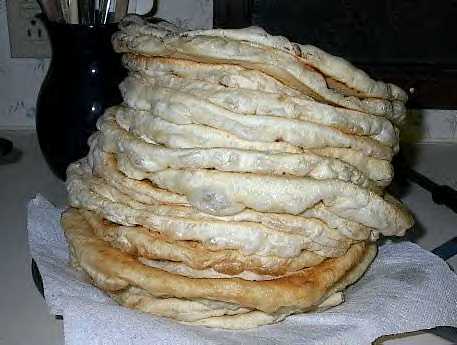|
|
Canku Ota |
|
|
(Many Paths) |
||
|
An Online Newsletter Celebrating Native America |
||
|
April 17, 2004 - Issue 111 |
||
|
|
||
|
Annual Conference For Native Americans Targets Heart Disease and Diabetes |
||
|
by Shakopee Mdewakanton Sioux
Community press release
|
||
|
Today's diet, while much more nutritious, is still vastly different in composition than traditional foods. Instead of venison and buffalo, it's processed luncheon meat and canned pork. Instead of berries picked ripe off bushes, it's canned fruit in sugar syrup. Instead of prairie turnips dug front the hillsides, it's instant mashed potatoes. Instead of wild rice, it's commercial cereals frosted with sugar. Instead of herbal tea, it's pop. These changes in diet permanently affected Native Americans and led to a host of illnesses, among them diabetes and heart disease. Diabetes is particularly destructive in the Native American community, where it is not uncommon to see diabetes patients with renal failure on kidney dialysis machines or who have undergone amputations. The rates of these and other complications, among them blindness and heart disease, are much higher in Native Americans. In some Indian communities the rate of diabetes among the elders approaches 100%. The disease itself and its complications are among the leading causes of death among Native Americans. Mortality rates for diabetes are 166% higher in the Native American population than in the general population. Diabetes is four to eight times more prevalent in Native Americans than in the general population. To provide information and support for diabetes and heart patients and their families, the Shakopee Mdewakanton Sioux Community is once again sponsoring the Northern Plains Native American Heart and Diabetes Conference, July 19 and 20, 2004. The two diseases share many of the same health issues. Many of the approaches for identifying who is at risk for diabetes and heart disease are similar: reviewing family history, obtaining blood pressure and cholesterol screenings and blood glucose screening. Also, preventive efforts for both diseases are similar, like lifestyle changes, diet habits, exercise habits, smoking cessation, limiting alcohol intake, and regular health care check ups. Conference participants will be able to choose to attend different break out sessions including: What's Cooking, Basic Steps to Serving more Nutritious Meals; Wake Up and Smell the Roses! Exercise; Treating Tobacco Dependence State-of-the-Art; the Chain of Survival and CPR; Eye; Teeth, Feet, and Diabetes; Healthy Lifeways for Native People; and Medicine Talk For further questions or comments, please call the SMSC Health Department at 952-496-6150, Additional information and registration forms are also available at www.shakopeedakota.org. |
|
|
||
|
|
||
| Canku Ota is a free Newsletter celebrating Native America, its traditions and accomplishments . We do not provide subscriber or visitor names to anyone. Some articles presented in Canku Ota may contain copyright material. We have received appropriate permissions for republishing any articles. Material appearing here is distributed without profit or monetary gain to those who have expressed an interest. This is in accordance with Title 17 U.S.C. Section 107. | ||
|
Canku Ota is a copyright © 2000, 2001, 2002, 2003, 2004 of Vicki Lockard and Paul Barry. |
||
 |
 |
|
|
The "Canku Ota - A Newsletter Celebrating Native America" web site and its design is the |
||
|
Copyright © 1999, 2000, 2001, 2002, 2003, 2004 of Paul C. Barry. |
||
|
All Rights Reserved. |
||
 Prior
Lake, Minnesota - Centuries ago Native Americans roamed the Great
Plains and river valleys following wild game. Buffalo and venison
were the mainstay of their diet. The people gathered berries, dug
prairie turnips and mouse beans, harvested wild rice, hunted small
game, caught and dried fish, and collected plants for tea and medicine.
The natural world provided everything that the people needed to
survive. The people were active and very fit. Many experts attribute
the origin of diabetes and heart disease among Native Americans
to the reservation era which began in the 1800s as tribal peoples
were confined to small reservations with limited resources. They
were no longer allowed to hunt and gather their foods as they had
done for centuries, instead the government gave them rations commonly
called commodities, More than century ago, these commodities largely
consisted of white flour, sugar, and salt pork. Out of these three
came one of today's delicacies: frybread, which is often mistaken
for a traditional food.
Prior
Lake, Minnesota - Centuries ago Native Americans roamed the Great
Plains and river valleys following wild game. Buffalo and venison
were the mainstay of their diet. The people gathered berries, dug
prairie turnips and mouse beans, harvested wild rice, hunted small
game, caught and dried fish, and collected plants for tea and medicine.
The natural world provided everything that the people needed to
survive. The people were active and very fit. Many experts attribute
the origin of diabetes and heart disease among Native Americans
to the reservation era which began in the 1800s as tribal peoples
were confined to small reservations with limited resources. They
were no longer allowed to hunt and gather their foods as they had
done for centuries, instead the government gave them rations commonly
called commodities, More than century ago, these commodities largely
consisted of white flour, sugar, and salt pork. Out of these three
came one of today's delicacies: frybread, which is often mistaken
for a traditional food.